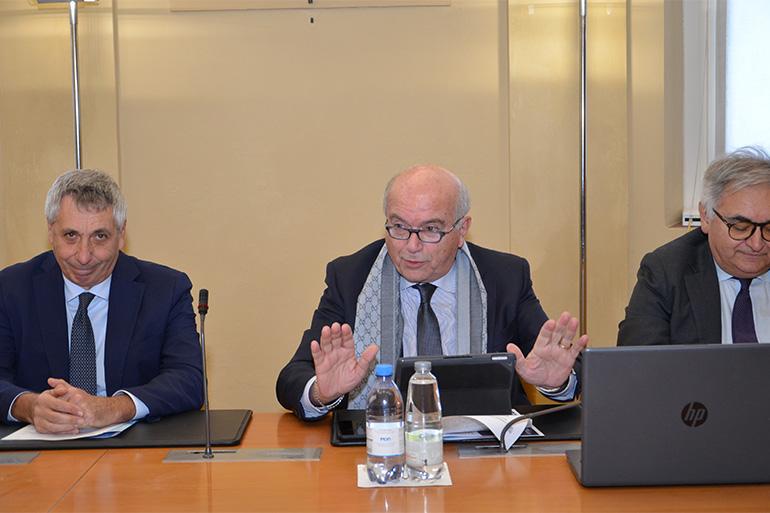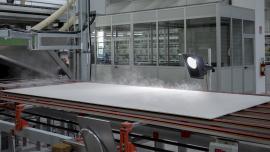The Italian ceramic tile industry sees a sharp contraction in 2023
Total tile sales fell to 362 million sqm (down 19.3% from 2022) and production dropped by 90 million sqm.
The Italian ceramic tile industry reported highly negative results in 2023 amid a global economic slowdown that led to a sharp contraction in demand across all continents.
According to preliminary figures compiled by Prometeia and presented by Confindustria Ceramica at its end-of-year press conference, the sector lost approximately one-fifth of its production and sales volumes last year compared to 2022. Total sales fell from 449 million to 362 million sqm (-19.3%), exports from 356 million to 277 million sqm (-22.1%) and domestic sales from 93 million to around 85 million sqm (-8.7%). Production is estimated to have dropped to 341 million sqm, 90 million sqm less than in 2022.
Confindustria Ceramica Chairman Giovanni Savorani confirmed that the decline in tile sales was caused by “a crisis in demand across all markets, particularly our main countries of export”.
Residential construction investments declined in 2023 compared to the previous year in both Western Europe and North America due to persistent inflation and rising mortgage rates.
In Europe, “the ECB has maintained its interest rates at the record level of 4.5%, which in turn is driving up our companies’ entire interest rate structure,” noted Savorani.
To avoid overfilling warehouses, extra plant shutdowns were made throughout the year and over the Christmas holidays, with production stoppages extended until after mid-January 2024 and furlough funding applications submitted for a total of around 6,000 employees. In addition to routine machinery maintenance, some companies also took advantage of this period to initiate investments in upgrading production lines.
Looking ahead to 2024, Savorani expects the market scenario to remain critical throughout the first half of the year but hopes for an improvement in the second half.
During the press conference, Savorani also discussed the competitiveness of the national economic and regulatory system within which Italian ceramic companies operate. He gave a favourable assessment of the Energy Security Decree, which confirms the two pending structural measures designed to provide energy at capped rates to companies in energy-intensive sectors, namely the national natural gas release and electricity release programmes.
“We hope that these measures will be implemented rapidly,” he said.
However, the Europe-wide ETS scheme continues to be a major stumbling block.
“We reaffirm our total commitment to adopting innovative environmental protection strategies, as clearly demonstrated by the investments we have made in recent years,” he said. “But the ETS needs to be fundamentally reformed, with a particularly pressing need to eliminate penalties on cogeneration and to include the ceramic industry among the sectors eligible for compensation of indirect costs. In its current form, the ETS constitutes a tax on companies and on labour that encourages financial speculation.”
Reform of the ETS system is also a priority of the Ceramic Manifesto presented during the Ceramics Days held in early November in Brussels, a document that sets out all the measures necessary to maintain the competitiveness of Italian and European ceramics in markets around the world.
Confindustria Ceramica’s chairman also noted that the EU is already in the process of renewing anti-dumping duties on Chinese tile imports for the third time and doubling those currently imposed on ceramic tiles imported from India. The rapid growth of Indian exports is also causing concern in the United States, where anti-dumping duties are due to be introduced at the end of 2024 with retroactive effect from the beginning of the year.

Cover Photo: Florim Flame Dark
Did you find this article useful?
Join the CWW community to receive the most important news from the global ceramic industry every two weeks























